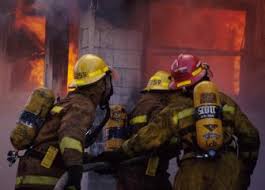Plastics production rides a fine line when the goal of low scrap, high yields and sustainable, repeatable systems are being developed. Without the proper approach, the system can quickly fall into one of two categories: tribulation.. or turmoil. Quite often you will hear old school molders describing their battle for a robust processing system as “fire fighting” in the world of plastic injection molding. In real terms, “fighting fires” on the production floor is a sign of system failure. True molding standards don’t require constant coddling, adjusting, sorting, etc. It is real easy to fall into the trap of applying “Band-Aids” to molding situations when the proper approach should have been: analyze the root cause, develop a long-term solution and monitor the correction to verify that further action isn’t needed. Ignorance of mold, press, material and manpower failures can become embedded into a company’s overall ideology and approach.
How many times have I heard the statement, “It always runs that way,” or “It can’t be fixed” and felt the mental cringe that I can only compare to fingernails being drug heavily across a chalkboard? Bad production systems exist because problems are ignored, or “quick fixes” become long term. No thought is being put into root cause and solution development, because poor performance is accepted as normalcy. Worst case scenario, the production run is implemented without proper process engineering protocols being followed and enforced. The industry’s mutually shared quest for continuous improvement is easily preached, but commitment to the concept can often fall short. Production needs can sometimes make rushed systems seem logical, but most often rushing through the engineering phase into production leads to broken molds, poorly maintained presses etc. and also scrap parts reaching the customer.
Perhaps “firefighting” is a slang molding term you are unfamiliar with. It frequently describes a molding scenario where processors are running press to press, putting out “fires” (addressing problems). In many cases, a thorough assessment of what recurring problems exist and making a commitment to eliminating those issues would remove the virus from the system, and create a healthy production system. This article will outline many common situations that occur, as well as offer suggestions on how to identify problems, develop solutions and enforce the ideology of continuous improvement.
“Fighting fires” may be commonplace in many injection molding facilities.. but no company is bound by its terms. By acknowledging the issues at hand, a facility can liberate itself by making strong, committed strides towards resolution. Continuous improvement is not bound by time constraints, but with hard work, commitment and a true analysis of facility failures, any company can plow through even the worst complications and succeed!

All of this may sound complicated, but it is easier to address than you may believe. The most important thing to remember? Approach each problem one at a time. Develop a team to evaluate, process, and resolve the issues based on their exposure, skill sets, and knowledge of the situation you are focusing on.
Need help eliminating “firefighting” from your plant?? Fill in the form below and we will be happy to assist you!
Once they have developed an approach that the vast majority involved support, stick to your guns and enforce the correction. Once the change has been firmly implemented, utilize the same team to develop a method of monitoring whether the new approach/ equipment/ procedure/etc. have given your operation the boost you desired and leave it to them to make the determination to accept, improve, or replace the change implemented.
Here are some of the most common failure areas on the plastic injection floor. Many are easy to correct.. others require more concentration:
Molds that repeatedly show poor production characteristics: poor ejection, repeating mechanical breakdowns, defects that consistently plague a processor from one press to the next. Evaluate tooling for ways to eliminate problematic runs through mold modification.
Material issues that continuously rear their ugly head: contamination, color swirls, burns, etc. Make a list of your own that you have noted as being recurring problems. Perhaps the list is press or mold specific, or it could be noted from one press to another consistently. Utilize the tools of historical data to pinpoint specific causes and correct these conditions. It can not be stressed enough the importance of meticulously tracking scrap In some cases, making changes to the material itself might provide improved results, such as adding a lubricant to the material to improve part extraction.
Presses/Robots/Auxiliary equipment can be an additional source of production failures. Screw assemblies fail; press components fall short of production requirements; machine/ equipment inconsistencies can prevent processors from controlling scrap/efficiencies/ downtime. Note what issues you see in your production schematic that continually fail you.
Manpower can be another source of failure: operators fail to meet production demands and miss quality failures; technical support crews fall short of production needs or miss crucial data and defects; in the end leading to unwanted scrap, downtime and equipment/tooling/communication breakdowns. Make yet another list of the failures you note in regards to this area of concern.
Successful molders:
- Recognize their weaknesses
- Plan and implement a corrective strategy
- Enforce, improve, and monitor the repairs they implement
- Review the completed change to assure that the desired effect is achieved
- Reevaluate poor performing corrections for improvement or replacement
TRAINING: When it comes to your facility, training should NEVER be deemed as unnecessary, or a budget cut! Your team is only as strong as its weakest link, and training is a crucial buffer when it comes to production. Utilize not only those in your facility that have the ability to offer their own expertise and input, but some of the other outside entities that have been exposed to multiple facilities. Withdrawing from the industry to pursue your own perception of “the right way to do things” is not only limiting, but dangerous! The best way for you to keep in tune with industry growth and exposure is participation. Research and implement training sources that best fit the scope of your operation…
ENGINEERING: There is an old saying that “success or failure is an engineered path.” Avoid shortcuts in the pre-production stage, and thoroughly plan your production through research and team thought. Problems are easiest to remove during the planning stage. Avoid the trap of rushing a mold into production. Thorough testing and planning will reap huge dividends, while avoiding lost revenue from shoddy production attempts.
DESIGN: Tooling/ Equipment/ Material/ Layout is either your best friend or your worst enemy. Take the time to evaluate the overall picture of what you intend to achieve and don’t be afraid to be critical of the successes you plan. What are your potential limitations? Has your tooling been validated, allowing for material fluctuation? How do you expect to be limited in your processing? Are work instructions in place that clearly define each team member’s responsibility, and what procedures do they need to follow to properly perform their job duties?
TOOLING: The best time to address tooling failures is during the development/ design stage. Are there potential failures that should probably be addressed prior to the production stage? What preventative maintenance procedures need to be implemented and enforced to assure that the tool life is as expected, or extended? What tool functions are most likely to lead to production breakdowns, and limitations, and are here ways and/ or means to reduce or eliminate these risks?
These are just a few considerations you need to evaluate in the pre-production phase. Success is more likely when planned, rather than the depending on Lady Luck to look over and bless your company. After all, team engineering efforts either eliminate or create “firefighting” in your plant. Ultimately it is your plant that makes the choice. Recognize production problems, develop solutions and then track corrections to assure continuous improvement evolves. As time passes, you will appreciate the efforts you have made through improved profits and less aggravation.
Need in-plant process training? Fill in the form below and we will be happy to assist you!
 All of this may sound complicated, but it is easier to address than you may believe. The most important thing to remember? Approach each problem one at a time. Develop a team to evaluate, process, and resolve the issues based on their exposure, skill sets, and knowledge of the situation you are focusing on.
Need help eliminating “firefighting” from your plant?? Fill in the form below and we will be happy to assist you!
All of this may sound complicated, but it is easier to address than you may believe. The most important thing to remember? Approach each problem one at a time. Develop a team to evaluate, process, and resolve the issues based on their exposure, skill sets, and knowledge of the situation you are focusing on.
Need help eliminating “firefighting” from your plant?? Fill in the form below and we will be happy to assist you!

